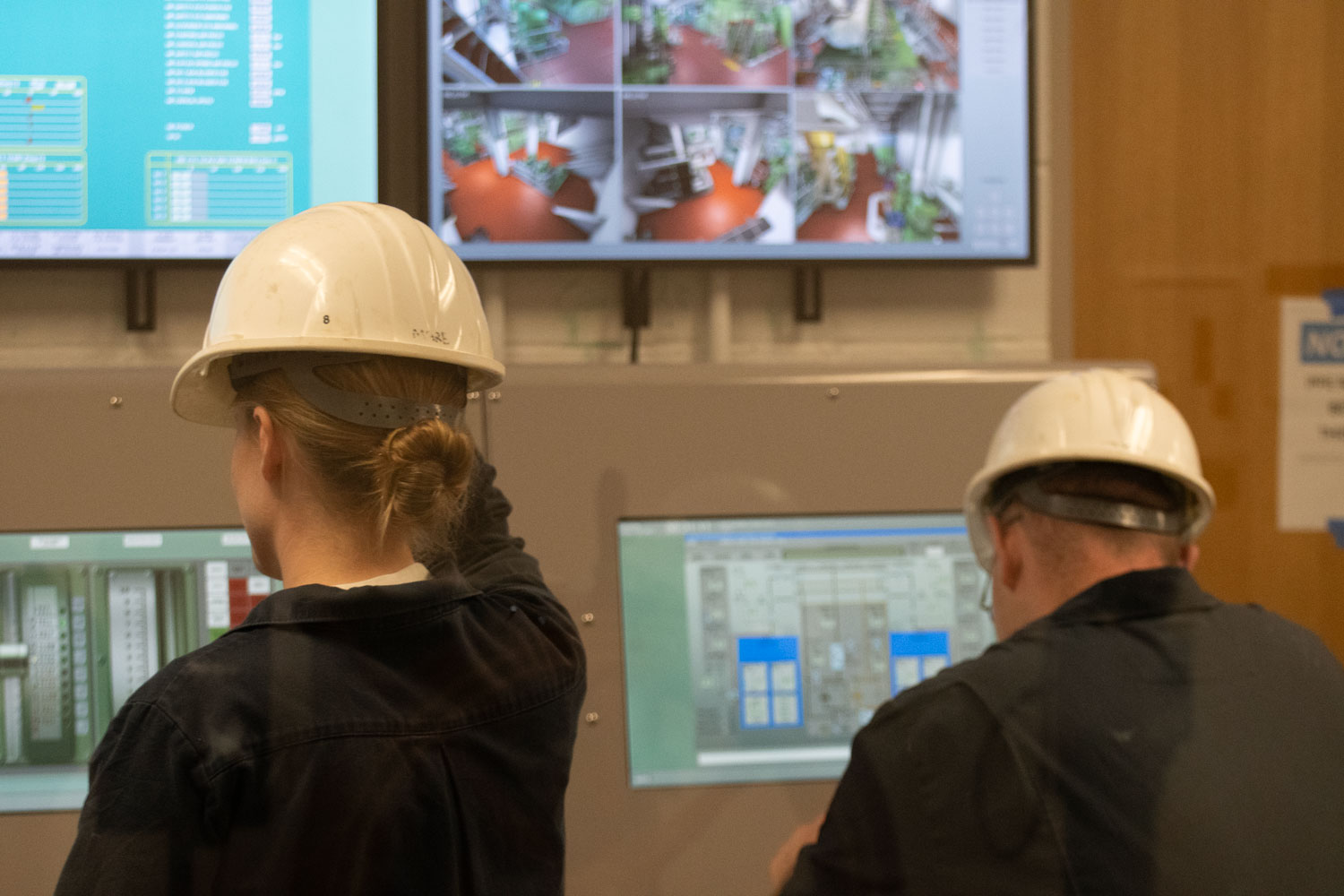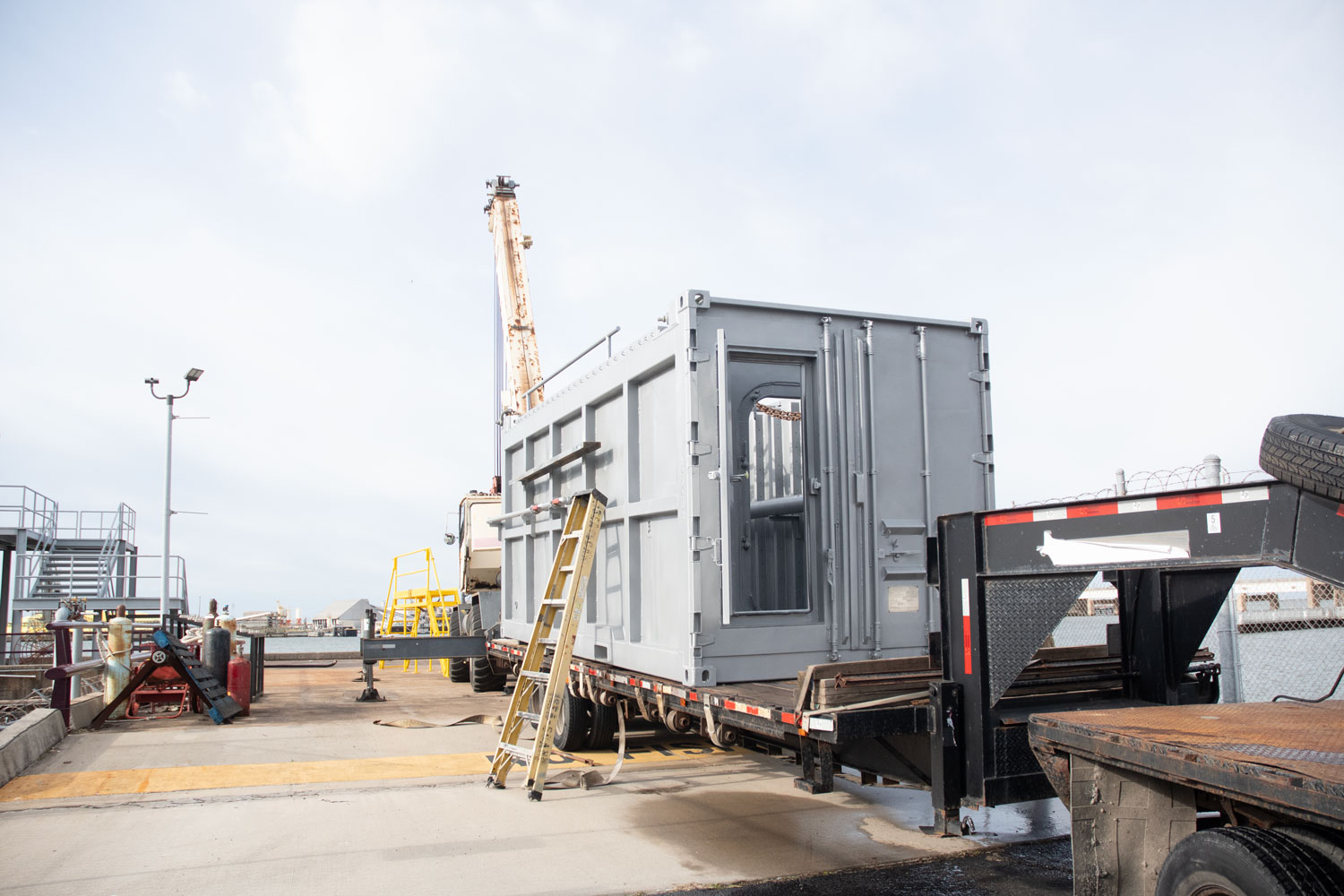Marine Engineering Technology Makes Innovations In Training
 Students in the diesel lab at Texas A&M University at Galveston
Students in the diesel lab at Texas A&M University at Galveston The Department of Marine Engineering Technology at Texas A&M University at Galveston is leading the industry’s future with new opportunities for hands-on education. With over 90% of everything we eat, wear or use traveling across oceans and inland waterways, the department is helping to meet the maritime industry’s need for skilled engineers with the knowledge and technical skills to keep the maritime sector afloat.
The department hosts the Marine Simulation Laboratory, a state-of-the-art facility designed to provide a realistic and immersive training environment. Boasting both ship’s engine and bridge simulations, they can be run individually or as a comprehensive unit, with each side communicating with and impacting what happens in the other. Running off of a complex computer program with 3D renderings of a variety of engine rooms, students can navigate the simulation from either a computer monitor or virtual reality headset, functioning similarly to a multiplayer video game, allowing students to interact with each other.
The engine simulator, which opened in the fall of 2023, replicates the operations of a ship’s engine room, providing practical experience in managing and troubleshooting various types of marine engines. Instructors can introduce different elements, such as stress or efficiency, in real-time, preparing students to respond to the variables of a ship’s engine room. These experiences are fundamental in teaching students about fuel management, engine maintenance and emergency procedures.

Students in the engine simulator
The new Damage Control Flooding Trainer arrived in late March. This one-of-a-kind, custom trainer is a physical structure, approximately 20 feet x 10 feet x 8 feet, used to train students to respond to different potential flooding casualties. Its design is a collaboration with the trainer’s builder, G&M Welding, and the Marine Engineering Technology faculty.
Key upgrades between the old and the new include double doors that serve as primary and secondary flooding boundaries, flooding bulkheads and decks, a sprung hatch, a mock electrical shutoff panel and an overhead “blackout” covering that can be used to simulate blackout ship conditions. Similar to the Propulsion Simulation Laboratory, the Damage Control Flooding Trainer is used to train both marine engineering technology and marine transportation students, as well as non-academic programs like NROTC.
When the double doors are secure and the students are ready, the simulator floods, creating a high-stress but low-stakes situation; students are pressured to use their critical thinking skills to respond to an emergency, but do so in a safe and controlled environment.

The Damage Control Simulator arriving on campus
These simulators work alongside other labs on campus, giving marine engineering technology students a well-rounded, practical and comprehensive academic experience. One such lab is the newly created Rapid Prototyping Laboratory, which offers students new capabilities in transforming their designs into physical models. With several 3D printers and water jet cutting equipment, this laboratory is extensively used in senior capstone courses. In addition, last year the department acquired a state-of-the-art universal testing machine in the Strength of Materials Laboratory to replace the previous 60-year-old machine. This equipment is capable of tensile, compression, flex, friction, and shear tests and can handle loads up to 300 Kilogram Newtons.
Paired with additional training opportunities students can pursue through the Texas A&M Maritime Academy, Galveston Aggies are positioned to lead and shape the future of the maritime industry.
“Our training capabilities are great assets to our program, the university, and the maritime industry as a whole,” said Dr. Alok Verma, department head and professor in the Department of Marine Engineering Technology. “I’m proud of our faculty’s work to make these spaces a reality. They’ve not only created a training facility, but also a gateway to safer and more efficient maritime operations. During the last four years, the department has been able to upgrade most laboratories, thanks to the financial support from upper administration.”
Media Contact
Taylor Bounds
bounds@tamu.edu